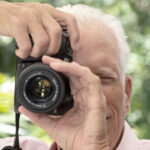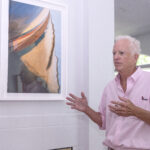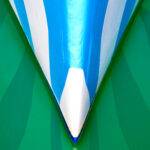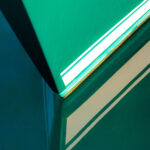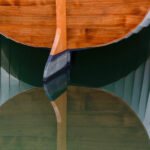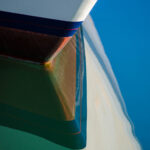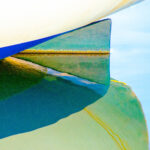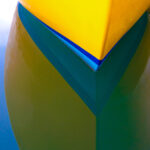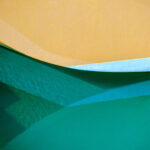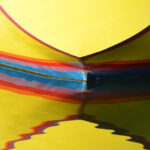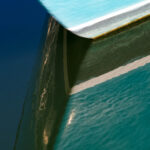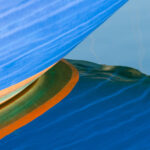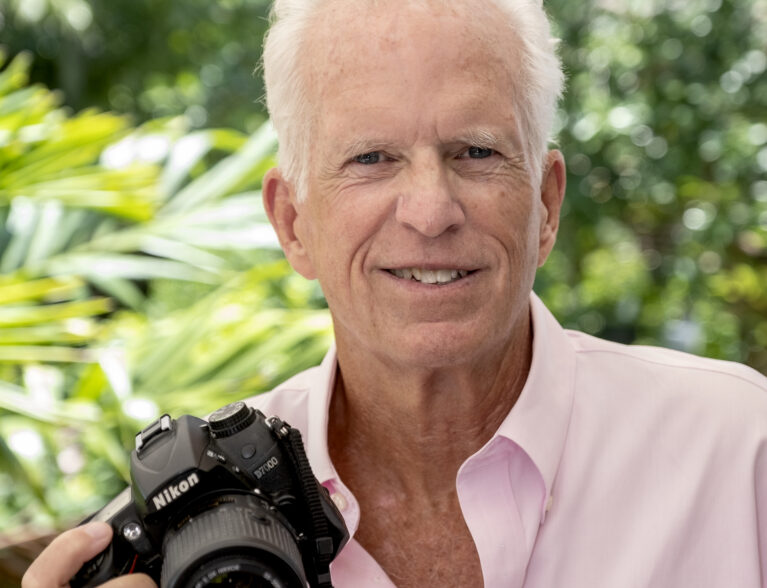
Photographer Craig McAllister says he was given his first “big boy” camera in 2010 by one of his best friends, a big-time bookseller with five New York Times best sellers, who had witnessed him taking pictures with his iPhone.
“Half of what had made this man famous were the pictures he had taken on his ‘Walk Across America.’ He gave me the camera he had used. I started taking pictures, first of my friend’s ’54 Chevy at the beach. I also got into birds. Birds of prey were one of my major things. I wanted to try everything you could try,” McAllister says.
Originally from Greenwich, Conn., and more recently from San Francisco, McAllister retired from marketing and advertising and has been a serious photographer for about 10 years.
Currently, he says he has become, sort of, possessed with boats.
“If you look hard enough, you find new stuff and the new stuff is like these little gems.
When I find a boat, I will fall in love with the boat,” says McAllister.
He explains that he often camps out, waiting for the sun to rise, itching to get those “first light” shots where he can capture craft in unique and spectacular fashion. In some of his photos, it is difficult to tell which is the boat and which is its reflection in the water.
McAllister says his approach is just to attack, taking multiple shots before determining which are the best ones. While living in California, for example, he had access to thousands of boats in the water. “I would go out and take 500 shots and then pick out 10 or 15 shots that were the best,” he recalls.
While there, McAllister experimented by taking pictures of sunsets, sunrises, hummingbirds, views from their home. He also tried nighttime shots on rainy days and wet surfaces, getting some wonderful reflections on the pavement from neon lights. “I wanted to take all the pictures that everyone takes, I wanted to do all of that.”
He had a Bird’s Eye View series, including one shot of a large bird holding a lizard, its catch for dinner, with some parts already consumed. In another, the eye of a large and beautiful osprey is captured looking straight back at you.
Visually, his work straddles the line between paintings and photographs. On first view, his photos resemble contemporary paintings, with vibrant colors and crisp lines. But further review reveals that they are photographs, imbued with glimmers of sunlight and reflections and, in some cases, edited with pops of color.
McAllister says he thought his first boat photo, taken in 2011 in Hyannis Harbor, Mass., was interesting, but filed it away. It wasn’t until a visit to Naples, Fla., that he and wife, Suzanne, came upon a little inlet with a group of boats.
“It was so calm, and it was like the lightbulb went off. The resulting picture wasn’t a big deal, but to me, it said, ‘OK, I can do this.’ And that was the picture that really got me going,” he says.
On a trip to Auckland, he says, “The picture I took there was a major breakthrough, the back of the boat, the reflections off the side of the boat. I just loved that.”
Encouraged by Suzanne, his brother and a childhood friend, he decided to take the art form seriously. He says Suzanne is a strong partner in this team. With an amazing sense of what works and doesn’t, she assists with the entire process.
“My buddy had a show, the San Francisco Art and Antique Show, and in 2018 I put up two pictures. Those sold for a decent amount, and I thought, ‘OK, we’re on our way.’”
That same year he sent in his work to the Sausalito Art Festival, which he says is “a big deal,” attended by upwards of 30,000 people. It was the first time he entered a serious show, adding that being considered as an artist was a hard moniker for him to accept.
“But all of a sudden, I’m putting my pictures out, it’s a juried thing, and I got picked,” he says.
McAllister did really well at that show and the one the following year, but the pandemic put a halt to festivals for the next few years.
However, it gave him time to listen to an inner voice that guided him to act on instinct, developing a photographic style that is both interesting and unique. Each time he takes a picture, he says he is totally reinventing the wheel.
“Finding a new boat with a new angle, you never know what you’ll find.”
Locally, McAllister participated in the Sea Oaks Art Stroll this past March, his first “face to face” show in nearly three years. “That was great, and I sold a number of pictures.”
He and Suzanne have traveled the world, scouting out a variety of places, including Honolulu, where he took hundred shots of one particular boat, experimenting with sunlight and flash over three days. “I just focused on this boat I named ‘In The Pink.’ It had so many different looks,” McAllister says.
In Picton, a small town in New Zealand, there were two marinas and another about 5 miles away, each with spectacular boats, clean water and colorful boats.
“You look at the boats and it tells you about the people, about the place.”
A boat in Sausalito, featured in his photograph, ‘Sunda,’ was “so photogenic” he says it could be taken from any angle.
“It was just incredible. The owner of the boat wanted a cleaned-up copy of the boat,” says McAllister, but he felt that leaving the imperfections gave the photo a depth, a “realness.”
His printer in San Francisco showed him how to edit photos, to the point where he could essentially redo the whole picture. But, he says, “you lose the soul. The defects add to the picture, giving it depth, reality, keeping it from becoming too clean, too stiff.”
Some, though, do require extensive editing. “A picture of a boat in very still water had so many dust particles on the water, it took me six hours to edit the specs out.”
Another time he edited a piece to too great an extent.
“It was too clean. I stripped it back to what the photo had been, and it’s so much better, seeing the lines, the moisture on top of the paint, the current on the water. It is the imperfections that add to it and make it,” McAllister says.
His photographs are printed on Hahnemuhle, a museum-quality, digital fine art paper from Germany, and he limits most editions of his work to 20, which keeps it in a higher-end market.
His work is on display in marinas in New Zealand, California and South Carolina, and in galleries in New York, Washington, D.C., California and Massachusetts.
Recently, his photograph ‘Hyannis 6:15’ was shown at the Vero Beach Art Club’s Art by the Sea event at the Vero Beach Museum of Art, where it received an Award of Merit. It will also be shown at the Vero Beach Art Club, where McAllister is a member, starting May 25.
Photos by Joshua Kodis


